Where to Find Bamboo in Missouri
Although there are no species of bamboo that appear natively in Missouri, there are multiple species that can grow well throughout the state. In general, the climate of Missouri can be hospitable to several different types of bamboo. Missouri has very hot, humid summers with thunderstorms and the risk of extreme weather such as tornadoes and floods. Missouri’s winters see temperatures that range from below freezing to the mid-40s Fahrenheit. Some parts of the state receive a large amount of snow in the winter. In between the two extremes, Missouri’s spring and fall seasons are typically mild, but often feature lots of rain. With this climate in mind, there are parts of the state where certain bamboo species can thrive. However, it is always wise to ask the advice of local experts with experience growing bamboo in Missouri’s unique climate and soil.
Growth and Cultivation
Typically, bamboo grows quickly in many different environments without requiring a significant investment of time and attention. Since there are several aspects of Missouri’s climate that make it suitable for bamboo, ensuring that your plant is in well-draining soil rich in organic matter in a place with sunlight access can result in tall, lush bamboo groves. Cultivating bamboo is not without its challenges, but when done well, can bring many benefits to your home and community. These benefits have prompted many people to grow bamboo for its ornamental value or as a commercial product, including some in Missouri.
This article will walk you through the challenges, benefits, and unique factors to consider when growing bamboo in Missouri. From there, you will learn about several places in Missouri where experts grow bamboo for the public to experience and learn. First, let’s talk about what bamboo is before reviewing some of the challenging aspects of growing bamboo in Missouri.
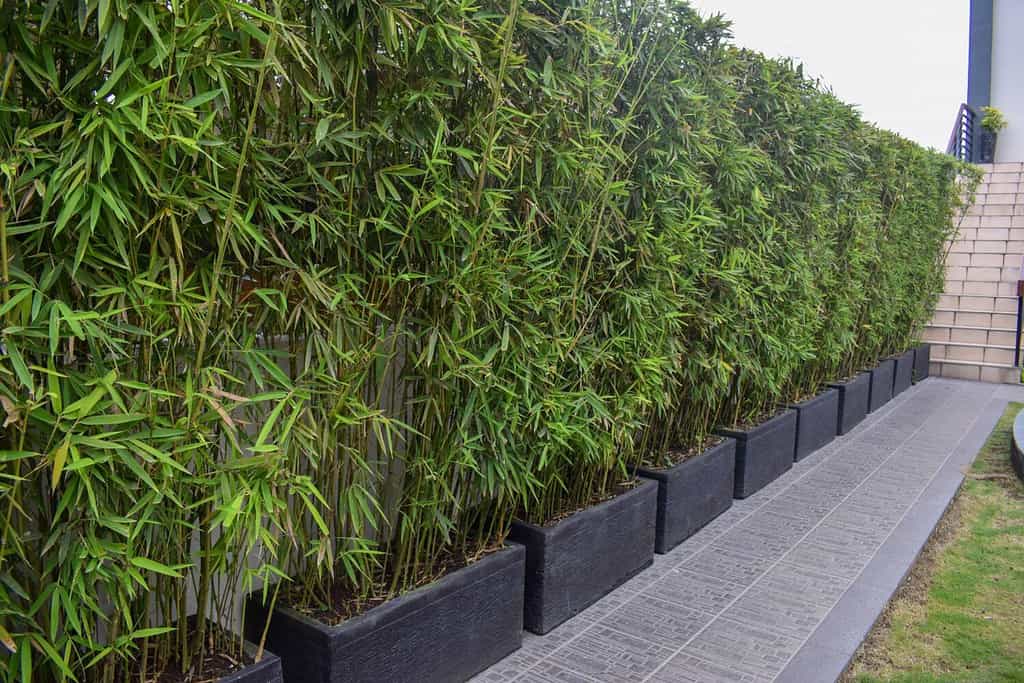
Originally from
Asia
, the plants known as “bamboo” include over 1,000 and maybe as many as 2,000 species of grass plants.
©Bayu Rachmawati/Shutterstock.com
About the Many Species Known as Bamboo
Originally from Asia, the plants known as “bamboo” include over 1,000 and maybe as many as 2,000 species of grass plants. These species belong to 100 genera of the Poaceae family and the Bambusoideae subfamily. This array of bamboo species come in very different colors, reach different heights, have distinct appearances, have different growing needs, and are suitable for different purposes. However, this diversity also makes it possible for species of bamboo to grow well in a broad range of climates and soils across the world.

Some bamboo species are considered invasive species. They can spread rapidly, sending out shoots that grow up and threaten the native plants in the area.
©Bastian Kienitz/Shutterstock.com
Challenges of Growing Bamboo in Missouri
Before you plant bamboo in Missouri, there are a few challenges you can expect to encounter. First, Missouri experiences a range of temperatures, from very hot in the summer to below freezing in the winter. Some species of bamboo cannot tolerate cold winter temperatures, so it is important to choose a bamboo that can withstand the freezing winter weather. Second, Missouri has hot and humid summers. This can promote the growth of fungal diseases, which can damage or kill your bamboo plants. You will want to monitor your bamboo for fungal growth and ensure that there is well-circulating fresh air. Third, Missouri ground is often composed of heavy, clay soil. Since bamboo grows best in organically-rich, well-draining soil, the dense clay soil can cause plants to experience root rot. Fourth, bamboo can be susceptible to pests that will damage the plant and shorten its lifespan.
With all of these challenges in mind, it is also important to consider the harm that certain types of bamboo can have on the local ecosystem. Some bamboo species are considered invasive species. They can spread rapidly, sending out shoots that grow up and threaten the native plants in the area. To prevent any damage to the Missouri environment, you will want to choose a non-invasive bamboo species. From there, monitor and manage any bamboo planted in your yard, pruning where needed. Consider also using physical barriers planted underground to limit the spread of bamboo shoots underground.
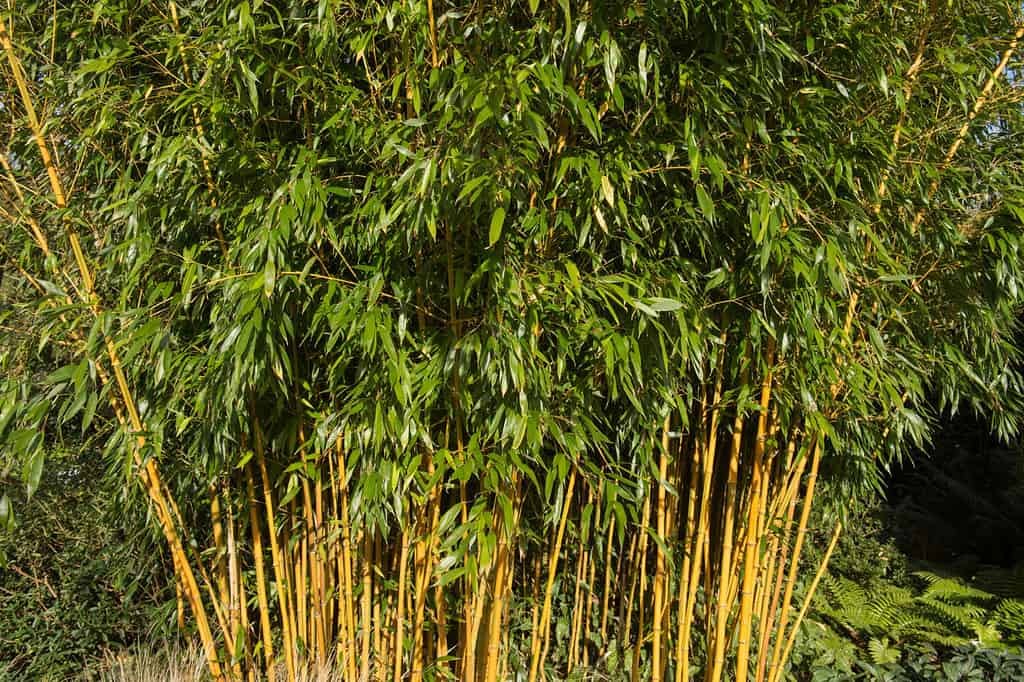
Yellow groove bamboo (
Phyllostachys aureosulcata) may grow well in Missouri due to its ability to withstand cold temperatures down to -10 degrees Fahrenheit.
©Peter Turner Photography/Shutterstock.com
How to Grow Bamboo in Missouri
Keeping these potential challenges in mind, don’t be deterred! Many people grow bamboo in Missouri. You can too! Though bamboo plants are natively from Asia, more specifically China, there are variations that grow well in many different climate conditions. In general, because bamboo plants are adaptable, resilient, and come in so many variations that you can likely find one that works well for Missouri’s climate and soil conditions.
Quite a few species of bamboo grow well in Missouri. Yellow groove bamboo (Phyllostachys aureosulcata) may grow well in Missouri due to its ability to withstand cold temperatures down to -10 degrees Fahrenheit. Bisset bamboo (Phyllostachys bissetii) can also withstand cold temperatures down to -10 degrees Fahrenheit. It is also a beautiful species known for having thick foliage. Rufa bamboo (Fargesia rufa) grows to only about 10 feet tall, but can tolerate very cold temperatures down to -20 degrees Fahrenheit. Temple bamboo (Semiarundinaria fastuosa) grows to be tall, with large green leaves, and can tolerate temperatures down to -10 degrees Fahrenheit. Each of these species can withstand the cold temperatures of Missouri winter and also has other wonderful qualities which may be suitable for your landscaping needs.

Although it is not very common, an aphid infestation can cause your bamboo’s leaves to turn yellow.
©Somyot Mali-ngam/Shutterstock.com
Benefits of Growing Bamboo in Missouri
Growing bamboo in Missouri can also bring multiple benefits that range from immediate to long-term. First, bamboo is a beautiful ornamental plant that can be an attractive barrier for the wind, natural privacy screen, and source of shade. Beyond these obvious benefits, bamboo’s dense root systems help prevent erosion and stabilize soil systems. Planting bamboo can also remove carbon dioxide from the air, creating positive environmental impact and leading to better air quality. For bird-watchers and animal-lovers, bamboo can become a habitat for a wide variety of species.
Despite these benefits, do not ignore the potentially-detrimental impact bamboo can have to an ecosystem. Do your research to choose a good, non-invasive bamboo to plant and do your part to monitor your own bamboo forest.
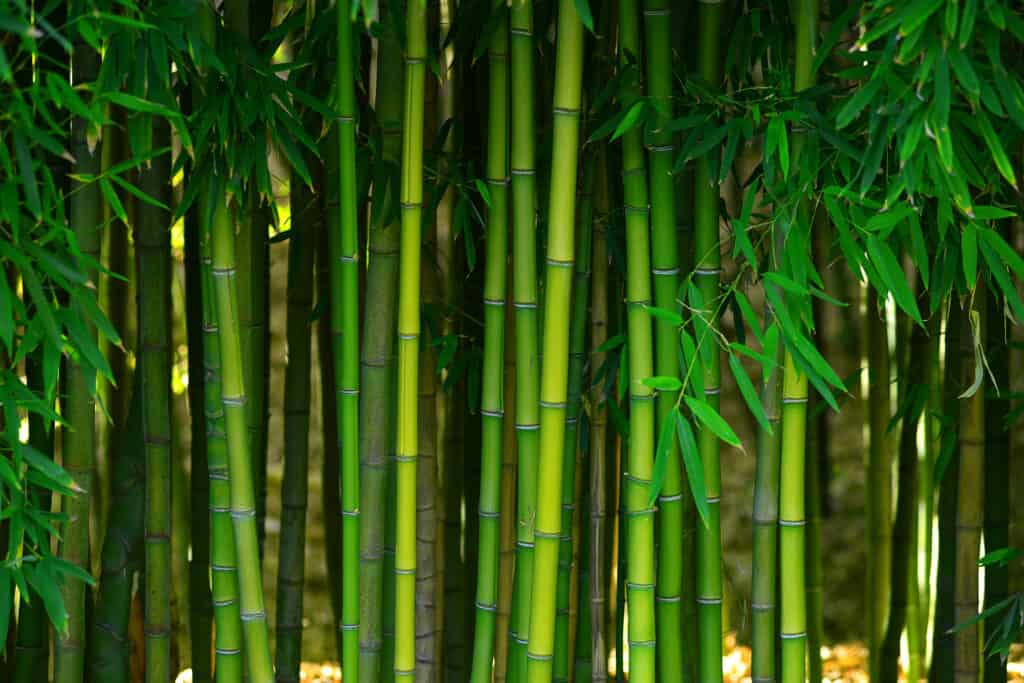
Before you plant your own bamboo, you may want to visit some of the places where people already grow bamboo in Missouri.
©iStock.com/p-orbital
Bamboo Arboretums and Gardens in Missouri
Before you plant your own bamboo, you may want to visit some of the places where people already grow bamboo in Missouri. One way you can do that is by visiting a botanical garden, arboretum, or plant nursery near you. The following list includes multiple gardens and other locations where you may be able to see bamboo growing in Missouri. This list is not complete, and new opportunities to see bamboo appear all the time. Don’t be afraid to do your own research! However, here is a short list to get you started.
Keep in mind that many botanical gardens and plant nurseries change their hours depending on the time of year or special events and activities going on. Some of the gardens are free, but others charge admission fees. A few of these locations have a mission based on education and interactive learning. Others showcase design and accomplishments in horticulture. These might impact the type of exhibits you can interact with. For these reasons, be sure to visit the website to double-check hours, admission fees, and specific garden details before you plan your visit.
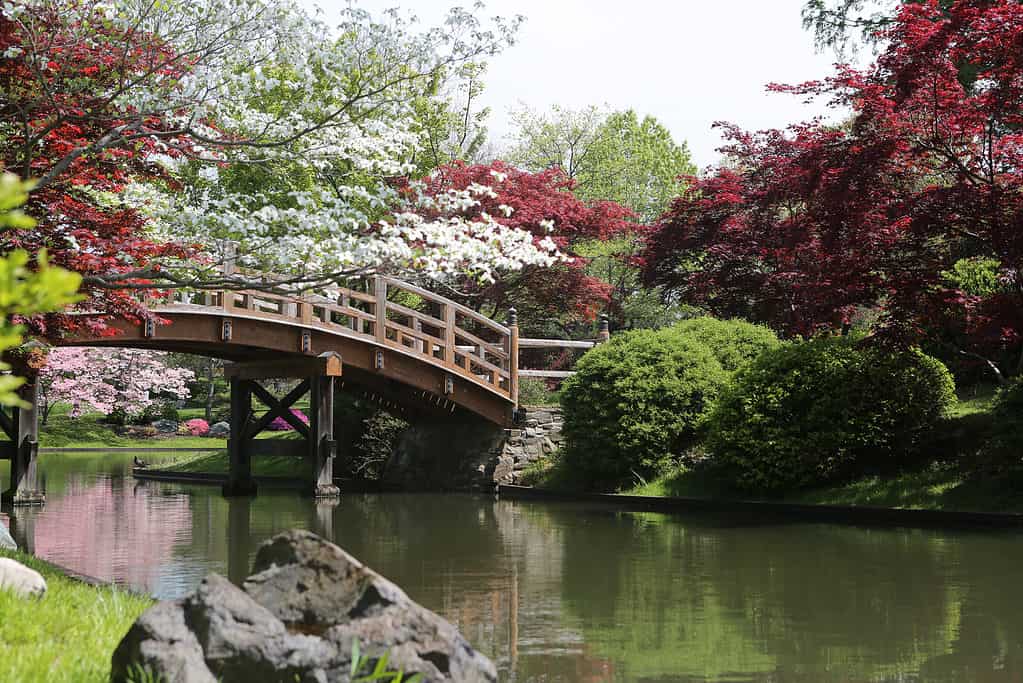
The Missouri Botanical Garden was founded in 1859 and now has the mission “to discover and share knowledge about plants and their environment in order to preserve and enrich life.”
©Zach Coburn/Shutterstock.com
Missouri Botanical Garden
The Missouri Botanical Garden is located in St. Louis, with an associated butterfly house in Chesterfield and a nature reserve in Gray Summit. The Missouri Botanical Garden was founded in 1859 and now has the mission “to discover and share knowledge about plants and their environment in order to preserve and enrich life.” The 79 garden acres include beautiful horticultural displays, one of the world’s largest collections of rare and endangered flowering species, historic architecture, and space for education and conservation learning. The grounds also include a 14-acre Japanese strolling garden. This unique garden is the largest Japanese garden in North America. It brings together a well-curated collection of plants, water features, islands, and architecture. The result is a serene landscape that changes with every season and offers visitors a moment of peace and tranquility.
The Missouri Botanical Garden also features multiple species of bamboo and hosts in-person demonstrations on how to control bamboo. The Climatron garden is lush, green, and climate-controlled, creating a rainforest environment that allows tall bamboo plants to thrive.
The Missouri Botanical Garden is open daily from 9 a.m. to 5 p.m., with the last entry time at 4:30 p.m. General admission is $14 for people aged 13 and up and free tickets for children 12 and under. St. Louis residents may show proof of residency to gain admission for $6. There are also regular opportunities for free admission to residents of St. Louis City and County. It is recommended to purchase tickets online in advance. For visitors who wish to purchase tickets in-person, in-person ticket purchases require cashless payment only (credit or debit cards).
Powell Gardens
Powell Gardens, in Kingsville just outside of Kansas City, exists as a place of rejuvenation and celebration of nature. This public garden maintains over 970 acres of meadows with 175 acres open to the public for education and enjoyment. These 175 acres feature a large assortment of plants to explore and learn about, with new opportunities to discover the plant life with the changing of the seasons. The grounds include a peaceful chapel, meadow walking trails, fountains and water features, a forest footpath, and much more. Powell Gardens is regularly the site of festivals, art exhibits, and other special events that allow visitors to learn about unique plants, gain gardening tips, and enjoy art and the natural world.
Powell Gardens is also home to multiple bamboo species, including some that are particularly hardy to the climate of Missouri. The gardens also feature switchcane (Arundinaria gigantea), the only bamboo species native to Missouri and Kansas, and one that some consider to be an underutilized evergreen shrub suitable for many landscaping purposes.
Powell Gardens varies in its schedule depending on particular weeks in the season. Typically, the grounds open for general admission on Tuesday or Wednesday through Sunday. The usual hours are 9 a.m. to 5 p.m. Tickets for adults are $12, those for youth are $5, and children 4 and under are free. Seniors and military service members may access special discounts. Parking is free to both members and non-members. Because the schedule changes often, check out the website to learn more about special exhibits and the hours for the week you hope to visit.
Shaw Nature Reserve
Shaw Nature Reserve, which is part of the Missouri Botanical Garden system, is in Gray Summit. The nature reserve focuses on native habitat management and restoration. With 17 miles of trails in total, the 14 miles of hiking trails through the Ozark Border landscape cover forest areas, glades, prairie, savanas, and wetlands, and showcases the work of restoring the landscape to its natural state. The Shaw Nature Reserve also includes garden paths through plant community areas and home gardens, which showcase over 500 native plant species. The nature reserve is an “outdoor laboratory” in which staff facilitate innovative outdoor programs to teach thousands of people about conservation and research each year.
One especially unique place is Shaw Nature Reserve’s Whitmire Wildflower Garden, which exists as a place for walking and learning during all four seasons of the year. It features natural landscaping and includes a native perennial garden, rick garden, prairie garden, water garden, woodland garden, and rain garden.
Shaw Nature Reserve also has bamboo growing near its Pinetum Lake. The golden bamboo is an Asian species not native to Missouri, but staff assure visitors that it is safely contained and provides a place for birds to find food and shelter. Visitors can also see Missouri’s native bamboo species called “giant cane” at the Whitmire Wildflower Garden and in the woodland areas.
Shaw Nature Reserve is open daily from 8 a.m. to 7 p.m., with the last entry at 6:30 p.m. Tickets for visitors aged 13 and up are $5, tickets for seniors are $3, and children aged 12 and under are free.
City of St. Louis
In recent years, the City of St. Louis has begun incorporating bamboo into its landscaping for city parks. For example, Tower Grove Park has a small bamboo grove that can be a fun place for children and adults to explore and for people considering their own bamboo landscape to visit. Washington University art students recently installed a special art exhibition incorporating bamboo at Peace Park, another park in St. Louis. The installation is a pavilion made from bamboo strips. This new installation highlights some of the versatility of bamboo as a raw material and renewable resource!
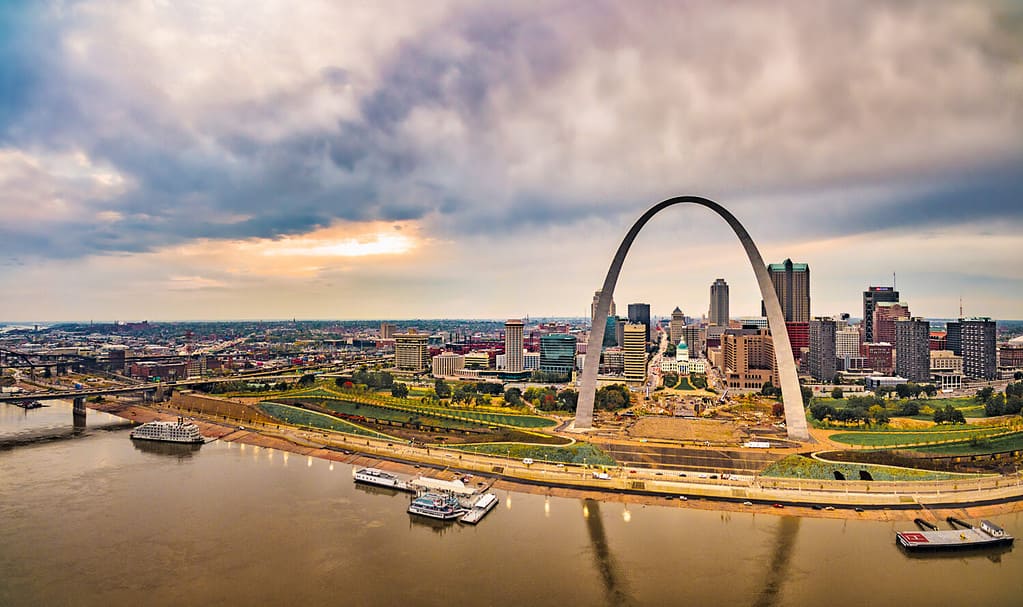
In recent years, the City of St. Louis has begun incorporating bamboo into its landscaping for city parks.
©James Roblee/Shutterstock.com
Other Places to Find Bamboo in Missouri
In addition to the locations described above, there are many places in Missouri where you can see thriving bamboo forests. If you want to gain some inspiration for growing bamboo at your home, try looking into private homes and garden estates that include bamboo as a focal point in the landscaping or as part of the larger design. For example, a local couple in Kansas City recently hired a notable local landscape architect to design their backyard. He used plenty of safe native plants, but also introduced some unique species of bamboo, as well as horsetail and atlas cedars.
You may be able to find these places by connecting with a garden club or searching for special events at private estates. You could also try connecting with a local expert or horticulturalist at a nearby plant nursery, who will likely be able to offer advice about where to source bamboo plants and which species are most suitable for growing in your local climate. With the trend for modern, minimalist landscape design, many Missouri homeowners are choosing to plant various species of bamboo. However, it is worth doing your research before planting so that you have correct expectations for bamboo maintenance and care and know about any potential impact your landscaping could have on the local environment.
Thank you for reading! Have some feedback for us? Contact the AZ Animals editorial team.








